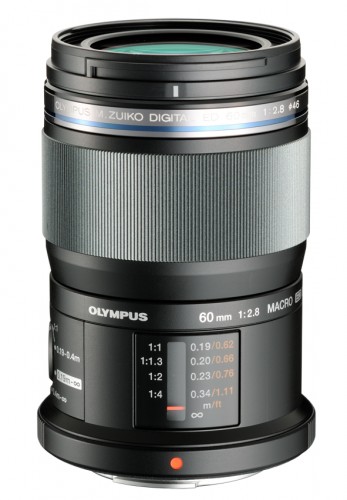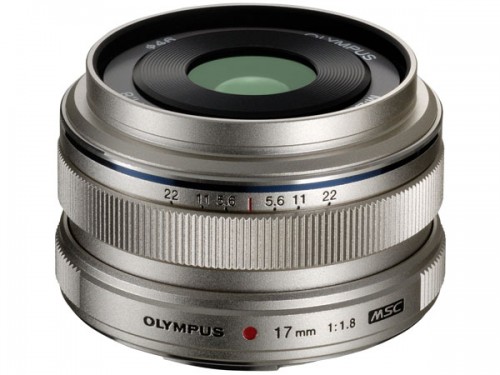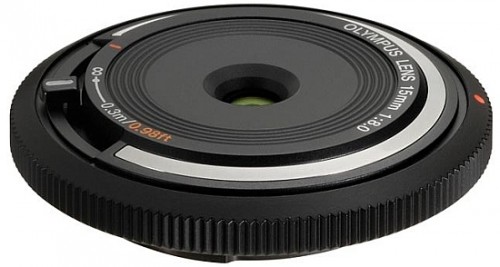New micro 4/3s lenses from Olympus

Also at Photokina today, Olympus has announced that it will release two new lenses for its micro four thirds cameras. The BCL-15mm f8.0 Body Cap Lens is just 9mm thick with three glass lens elements in three groups and gives a single focal length of 30mm (35mm camera equivalent). It has a fixed f8 aperture and hence a shallow depth of field, is compatible with manual focusing using a lever and capable of close-up shooting as close as 30 cm.
Of more interest perhaps is M.ZUIKO DIGITAL ED 60mm f2.8 Macro prime lens originally announced in February. This gives a single focal length equivalent to a 120mm lens on a 35mm camera. Its closest focusing distance is 19mm and it has an Extra-low Reflection coating.
The M.ZUIKO DIGITAL ED 60mm f2.8 Macro will be available from October priced at £429. The BCL-15mm f8.0 Body Cap Lens’ availability and price are still to be announced. Lastly, Olympus is working on a fast 17mm f/1.8 wide-angle prime, dates and prices also to be announced.

Olympus Imaging Singapore is pleased to announce the upcoming release of the M.ZUIKO DIGITAL ED 60mm f2.8 Macro, an interchangeable lens that conforms to the Micro Four Thirds System standard.
The M.ZUIKO DIGITAL ED 60mm f2.8 Macro is a single focal length macro lens equivalent to a 120mm lens for 35mm cameras. Featuring a closest focusing distance of 19 cm, excellent close-up capability with 1X* magnification, and dust and splash proof construction, this lens is ideal for macro shooting under a wide range of conditions, including in the rain or near the water, as well as being useful in other applications such as landscape and portrait shooting.
To ensure the best possible imaging quality, this lens incorporates 13 lens elements in 10 groups with extensive use of special glass materials such as ED (Extra-low Dispersion), HR (High Refractive index) and E-HR (Extra-High Refractive index) elements to completely eliminate the chromatic aberrations that can be noticeable with telephoto macro lenses. From the far view to the macro domain and from the image center to the periphery, this optical design achieves consistently clear, sharp, high-contrast imaging performance.
For fast, quiet autofocusing, the M.ZUIKO DIGITAL ED 60mm f2.8 Macro incorporates Olympus’ exclusive MSC (Movie & Still Compatible) mechanism, which is based on a floating-type inner focusing system with three drive systems. With no change in the overall lens length during autofocusing, the camera can be held securely to remain stable throughout. Other features such as focus limit switching and a shooting distance/magnification indicator window enhance macro shooting control and precision.
Main Features:
Excellent imaging performance with high resolution and contrast, as well as high close-up shooting capability with 1X* magnification.
MSC mechanism for fast, quiet autofocusing.
Dust and splash proof construction for secure shooting under poor conditions, as well as enhanced control with focus limit switch and indicator window.
Main Feature Details
- Excellent imaging performance with high resolution and contrast, as well as close-up shooting capability with 1X* magnification.
1-1. 1X* macro lens with high resolution and contrast
The M.ZUIKO DIGITAL ED 60mm f2.8 Macro is a single focal length, telephoto macro lens boasting excellent close-up shooting performance with a closest focusing distance of 19 cm and 1X* shooting magnification.
To ensure high imaging performance throughout the shooting range from the far view to life-size macro shooting, this lens incorporates a floating-type inner autofocusing system with three drive systems. To eliminate the chromatic aberrations typically noticeable with telephoto macro lenses, ED (Extra-low Dispersion) and HR (High Refractive index) elements are employed in the fixed groups, while HR and E-HR (Extra-High Refractive index) elements are employed in the focusing groups. This optical design makes it possible to achieve sharp imaging performance while maintaining high resolution and contrast from infinity to the closest focusing distance and from the image center to the peripheries.
1-2. Clear circular defocusing with little vignetting in the macro domain
To obtain true circular defocusing, it is necessary to use a circular aperture diaphragm and minimise vignetting. Vignetting is a phenomenon that sometimes occurs when the light is incident obliquely to the optical axis. As a result, defocusing in the image periphery becomes elliptical like a rugby ball, or polygonal rather than circular, depending on the extent to which the light rays in the image periphery are limited by the diameters of lens elements before and after the aperture.
This lens directs the light rays to the peripheral areas to minimise vignetting and obtain circular defocusing, particularly in the macro domain. The lens optics is designed to eliminate double-line defocusing, which results in the blurred area being contoured with dual lines or edges being coloured due to chromatic aberrations.
1-3. ZERO (Zuiko Extra-low Reflection Optical) coating
To thoroughly eliminate ghosts and flare which are normally very hard to prevent, the lens surfaces are treated with Olympus-original ZERO (Zuiko Extra-low Reflection Optical) coating which cuts the reflection of wavelengths between 450 and 650 nm in half. The result is clear image performance with a true-to-life sense of transparency and depth even under unfavorable conditions such as backlit shooting. The ZERO coating technology was derived from the thin film control technology Olympus developed for multi-layer film deposition technology in the field of microscopy. Another advantage of this advanced technology is resistance to scratching and degradation thanks to the high film strength made possible by vacuum deposition.
Thanks to the optimised layout of the lens groups behind the aperture and the effect of the ZERO coating, this lens also reduces spot flare (a phenomenon that tends to occur when shooting a scene with dark centre and bright periphery using a stopped-down aperture, in which flares shaped like aperture blades are imaged in the frame).
